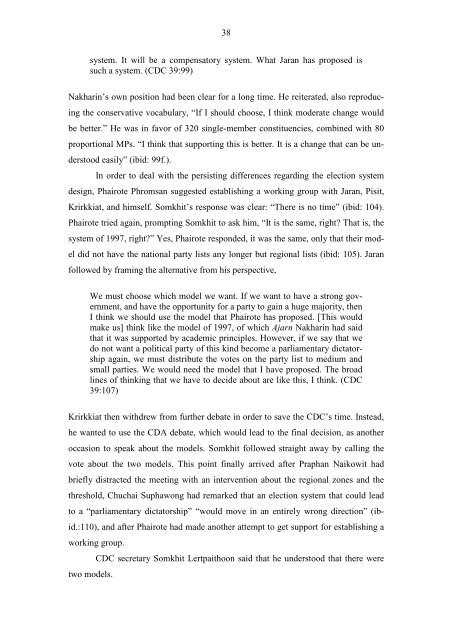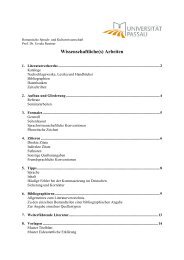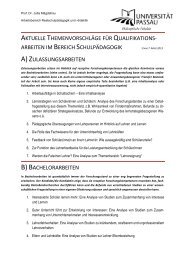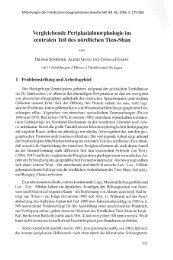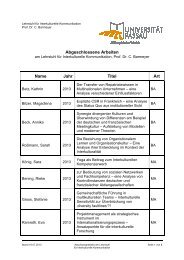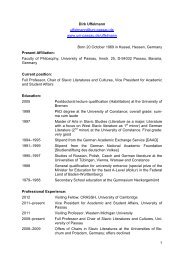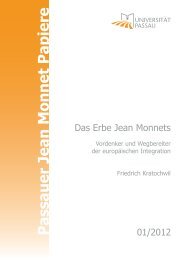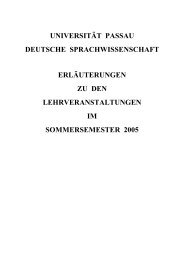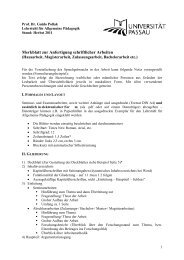The attempt to adopt a mixed-member proportional election system ...
The attempt to adopt a mixed-member proportional election system ...
The attempt to adopt a mixed-member proportional election system ...
Create successful ePaper yourself
Turn your PDF publications into a flip-book with our unique Google optimized e-Paper software.
38<br />
<strong>system</strong>. It will be a compensa<strong>to</strong>ry <strong>system</strong>. What Jaran has proposed is<br />
such a <strong>system</strong>. (CDC 39:99)<br />
Nakharin’s own position had been clear for a long time. He reiterated, also reproducing<br />
the conservative vocabulary, “If I should choose, I think moderate change would<br />
be better.” He was in favor of 320 single-<strong>member</strong> constituencies, combined with 80<br />
<strong>proportional</strong> MPs. “I think that supporting this is better. It is a change that can be unders<strong>to</strong>od<br />
easily” (ibid: 99f.).<br />
In order <strong>to</strong> deal with the persisting differences regarding the <strong>election</strong> <strong>system</strong><br />
design, Phairote Phromsan suggested establishing a working group with Jaran, Pisit,<br />
Krirkkiat, and himself. Somkhit’s response was clear: “<strong>The</strong>re is no time” (ibid: 104).<br />
Phairote tried again, prompting Somkhit <strong>to</strong> ask him, “It is the same, right? That is, the<br />
<strong>system</strong> of 1997, right?” Yes, Phairote responded, it was the same, only that their model<br />
did not have the national party lists any longer but regional lists (ibid: 105). Jaran<br />
followed by framing the alternative from his perspective,<br />
We must choose which model we want. If we want <strong>to</strong> have a strong government,<br />
and have the opportunity for a party <strong>to</strong> gain a huge majority, then<br />
I think we should use the model that Phairote has proposed. [This would<br />
make us] think like the model of 1997, of which Ajarn Nakharin had said<br />
that it was supported by academic principles. However, if we say that we<br />
do not want a political party of this kind become a parliamentary dicta<strong>to</strong>rship<br />
again, we must distribute the votes on the party list <strong>to</strong> medium and<br />
small parties. We would need the model that I have proposed. <strong>The</strong> broad<br />
lines of thinking that we have <strong>to</strong> decide about are like this, I think. (CDC<br />
39:107)<br />
Krirkkiat then withdrew from further debate in order <strong>to</strong> save the CDC’s time. Instead,<br />
he wanted <strong>to</strong> use the CDA debate, which would lead <strong>to</strong> the final decision, as another<br />
occasion <strong>to</strong> speak about the models. Somkhit followed straight away by calling the<br />
vote about the two models. This point finally arrived after Praphan Naikowit had<br />
briefly distracted the meeting with an intervention about the regional zones and the<br />
threshold, Chuchai Suphawong had remarked that an <strong>election</strong> <strong>system</strong> that could lead<br />
<strong>to</strong> a “parliamentary dicta<strong>to</strong>rship” “would move in an entirely wrong direction” (ibid.:110),<br />
and after Phairote had made another <strong>attempt</strong> <strong>to</strong> get support for establishing a<br />
working group.<br />
CDC secretary Somkhit Lertpaithoon said that he unders<strong>to</strong>od that there were<br />
two models.


